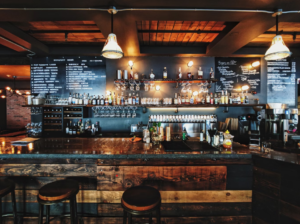Starting a food service business is a big adventure that can be really exciting but also a little overwhelming. There are so many things you have to think about before you even open your doors to the public. You’ll need to plan carefully, pick the right location, get the right team together, and handle a lot of important details.
Every choice you make early on can have a huge effect on your success later. That’s why it’s important to know the basic steps that will help you build a strong foundation and keep things running smoothly from the beginning.

Source: Unsplash (CC0)
Pick the right concept for your business
Before you can start serving up delicious food, you have to know what kind of food service you want to offer and who you want to serve. Think about whether you want a full-service restaurant, a food truck, a coffee shop, or a fast-casual spot that gets people in and out quickly. Your concept should fit the community you’re in and offer something people really want but maybe can’t find easily right now.
When you’re coming up with your concept, it helps to visit other businesses around you and notice what’s popular and what’s missing. For example, if there are five burger joints on the same street but no good pizza places, you might have found a great opportunity. Once you have a clear idea, you can start thinking about the kind of atmosphere, design, and menu that will match your concept.
Get the right licenses and permits
No matter how amazing your food is, you can’t just start selling it without the right paperwork. Every food business needs specific licenses and permits, and skipping these steps can cause huge problems later. You’ll probably need a business license, a health department permit, a food handler’s permit, and sometimes even a special zoning permit depending on where your business is located.
One important step is getting your RBS certification, which is required if you plan on serving alcohol. This shows that you know how to sell alcohol responsibly and safely. Rules can be different in every city and state, so it’s a good idea to check local laws early and make a checklist of everything you’ll need before you open.
Build a strong team
Even if you’re the best chef or manager in the world, you can’t run a successful food business alone. You’ll need a team of people who share your vision and care about giving great service. Hiring takes time and energy, but it’s one of the most important things you’ll ever do for your business. Take time to find people who not only have the right skills but also bring positive attitudes.
Training your staff the right way from the start can save you a lot of problems down the road. For instance, teaching servers how to handle customer complaints politely can turn a bad situation into a good review. Investing time into hiring and training will help build a business people trust and love coming back to.
Create a smart financial plan
One of the biggest reasons new food businesses fail is because they run out of money too quickly. That’s why managing your money carefully is not something you can afford to ignore. Right from the start, you should set up a budget that includes everything from rent and equipment to marketing and staff wages.
Thinking about managing your finances means tracking every dollar that goes in and out and planning for slower seasons too. For example, if you know that business will drop after summer ends, you can plan ways to bring in customers like special deals or events. Staying organized with your money will help you make smarter decisions and stay out of trouble later.
Design a menu that stands out
Your menu is one of the first things customers will see and remember about your business. It should match your concept and be easy for people to understand and order from. Try not to put too many items on the menu because that can overwhelm customers and make it harder for your kitchen to keep up.
A smart tip is to highlight a few special dishes that really show off what you do best. For instance, if you open a taco truck, offer some traditional tacos but also a few unique flavors that people can’t get anywhere else, or unique fusions with other local favorites. A well-planned menu can help you control food costs and keep customers excited about coming back.
